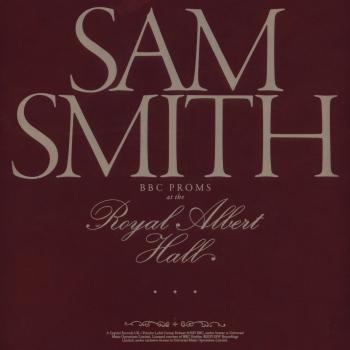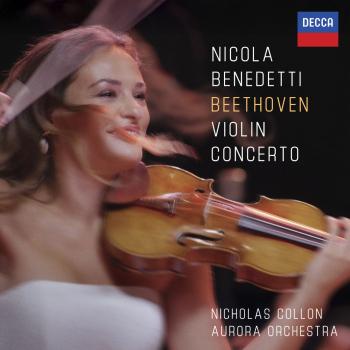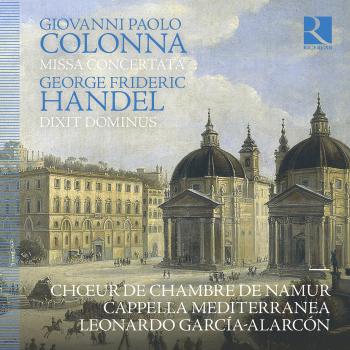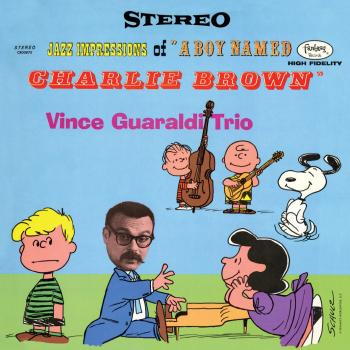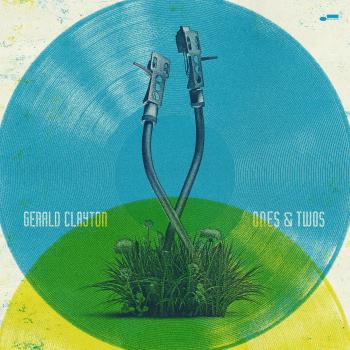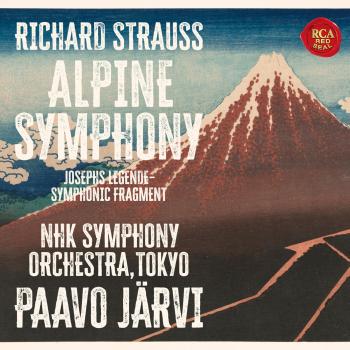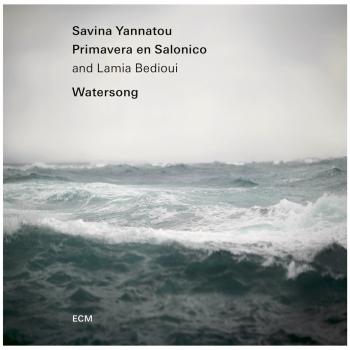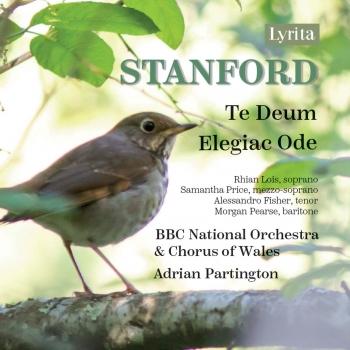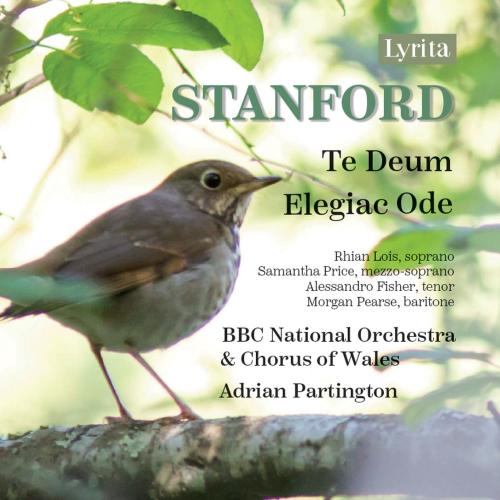
Stanford: Te Deum & Elegiac Ode BBC National Orchestra of Wales and Chorus of Wales & Adrian Partington
Album info
Album-Release:
2024
HRA-Release:
05.07.2024
Label: Lyrita
Genre: Classical
Subgenre: Vocal
Artist: BBC National Orchestra of Wales and Chorus of Wales & Adrian Partington
Composer: Charles Villiers Stanford (1852-1924)
Album including Album cover Booklet (PDF)
- Charles Villiers Stanford (1852 - 1924): Te Deum, Op. 66:
- 1 Stanford: Te Deum, Op. 66: I. No. 1 Te deum laudamus - Andante maestoso - Allegro moderato (all breve) 09:33
- 2 Stanford: Te Deum, Op. 66: II. No. 2 Tu rex gloriae - Larghetto 07:58
- 3 Stanford: Te Deum, Op. 66: III. No. 3 Judex crederis - Allegro energico 07:49
- 4 Stanford: Te Deum, Op. 66: IV. No. 4 Per singles dies - Larghetto - Andante con moto tranquillo 07:17
- 5 Stanford: Te Deum, Op. 66: V. No. 5 Miserere nostril - Adagio 04:46
- 6 Stanford: Te Deum, Op. 66: VI. No. 6 In te, Domine speravi - Allegro maestoso - Tranquillando - Andante Maestoso 08:34
- Elegiac Ode, Op. 21:
- 7 Stanford: Elegiac Ode, Op. 21: I. No. 1 Come, lovely and smoothing Death - Lento Allegro Maestoso 08:31
- 8 Stanford: Elegiac Ode, Op. 21: II. No. 2 Dark Mother, always gliding near - Allegretto con moto 03:48
- 9 Stanford: Elegiac Ode, Op. 21: III. No. 3 From me to thee glad serenades - L'istesso Tempo 03:56
- 10 Stanford: Elegiac Ode, Op. 21: IV. No. 4 The night is silence - Tranquillo - Allegretto maestoso con moto - Adagio molto - Lento 10:19
Info for Stanford: Te Deum & Elegiac Ode
By the time Stanford received a commission from the Norfolk and Norwich Festival to write a choral work for them in 1884, he had, at the age of 32, already begun to assert himself as one of Britain’s leading composers. The Elegiac Ode was, however, his first mature foray into the world of major British choral festivals. Some of the Elegiac Ode had in fact been sketched three years earlier in 1881, but after the Norwich commission was received, Stanford evidently grasped the opportunity to complete the work in its entirety in July 1884. The words were taken from the last part of Whitman’s elegy, ‘When lilacs in the dooryard bloom’d’, written in the aftermath of President Lincoln’s assassination in 1865 (it was a text which Stanford’s pupil, Holst, later used for his Ode to Death, composed in the wake of the war in 1919). Taking the seven verses of the burial hymn, Stanford divided his chosen text into four parts, thereby creating a four-movement musical structure more akin to a choral symphony with its substantial (and thematically related) choral outer movements flanking two shorter inner essays. Stanford’s large-scale setting of the Te Deum Op. 66 was first sung at the Leeds Festival on 6 October 1898 and its ambitious, opulent dimensions were clearly intended to be a fitting commemoration of the accession to the throne of Queen Victoria (its dedicatee) sixty years earlier as well as a tribute to the full-bodied, well-trained Leeds chorus of 350 singers. A particular feature of the Te Deum is the grandeur of much of its choral writing. Though also dramatic in its impact, a dominating feature of the Te Deum is its prominent use of the chorus, and the many fulsome sonorities Stanford was able to draw from the magnificent ‘instrument’ of the Leeds voices. (Jeremy Dibble)
Rhian Lois, soprano
Samantha Price, mezzo-soprano
Alessandro Fisher, tenor
Morgan Pearse, baritone
BBC National Chorus of Wales
BBC National Orchestra of Wales
Adrian Partington, conductor
Rhian Lois
Current and future engagements for Rhian Lois include ADINA The Elixir of Love English National Opera, MAID Adès’s Powder Her Face Semperoper Dresden, JO ANN in Tippett’s New Year BBC Scottish Symphony Orchestra commercial recording release (NMC), Mozart Requiem Royal Festival Hall and MacMillan’s Christmas Oratorio Royal Scottish National Orchestra.
Most recent engagements include GRETEL Hänsel und Gretel Hamburg State Opera, JANINE/OFWARREN The Handmaid’s Tale ENO, ANGELICA in Elena Langer’s Figaro Gets a Divorce Theatre Magdeburg and Grand Théâtre de Genève, JERUSHA The Intelligence Park Royal Opera House (Linbury Theatre), MAX Where The Wild Things Are Alexandra Palace, London and the Mariinsky Theatre, GOVERNESS The Turn of the Screw filmed Opera Glassworks conducted by John Wilson, GRETEL Hansel and Gretel and MUSETTA La bohème Scottish Opera, ORIANA Amadigi Garsington Opera, NANETTA Falstaff Grange Festival, ZERLINA Don Giovanni Santa Fe Opera and ADELE Die Fledermaus Welsh National Opera.
Her previous appearances at English National Opera also include VALENCIENNE The Merry Widow, SUSANNA Le Nozze di Figaro, ADELE Die Fledermaus, NERIS Medea, ATALANTA Xerxes, GOVERNESS The Turn of the Screw, MUSETTA La bohème, JULIETTE Die Tote Stadt, FRASQUITA Carmen, YOUNG WOMAN Between Worlds, FIRST NIECE Peter Grimes, PAPAGENA Die Zauberflöte and YVETTE The Passenger. She has also sung PAPAGENA Die Zauberflöte Royal Opera House, Covent Garden, PAMINA Die Zauberflöte Nevill Holt and EURYDICE in Telemann’s Orpheus London Handel Festival.
In concert Rhian has most recently performed Faure Requiem and Stanford Te Deum and Elegiac Ode BBC National Orchestra of Wales, and at venues such as the International Enescu Festival and Royal Festival Hall where she performed with Kings College Cambridge Choir, Philharmonia Orchestra. She has also performed Mozart’s Requiem and Handel’s Messiah with the City of Birmingham Symphony Orchestra and Simon Halsey, CBSO‘s Stravinsky retrospective Igor Fest, Brahms’s Requiem at Milton Court, Barbican, Handel’s Messiah in Cambridge; Carmina Burana at the Brangwyn Hall; a concert of Mozart Masterpieces at the Royal Festival Hall; and a performance of Mendelssohn’s Incidental music to A Midsummer Night’s Dream with Edward Gardner and CBSO recorded by Chandos.
Rhian is a graduate of the Royal Welsh College of Music and Drama, Royal College of Music and National Opera Studio.
Samantha Price
Welsh mezzo-soprano Samantha Price read Speech and Language Therapy at the University of Reading before gaining in a Distinction for her MA in Opera Performance at the Royal Welsh College of Music and Drama, assisted by the Dame Shirley Bassey Scholarship, the Jenkin Philips Memorial Scholarship and an Advanced Study Award in Music from the Arts Council of Wales. In 2018, she became an Honorary Associate of the RWCMD.
A Samling Artist and a Finalist at the Young Welsh Singer of the Year Competition, she furthered her studies on the ENO Opera Works Programme, supported by a Countess of Munster Award, and at the National Opera Studio, supported by English National Opera, the Arts Council of Wales, the Robert Vivian Memorial Trust and Christopher Ball.
Whilst still a student, Samantha Price made her debut at English National Opera as Third Gentleman Julietta and became a Harewood Young Artist. For ENO, she has subsequently sung Mercédès Carmen, Second Lady The Magic Flute, Cherubino The Marriage of Figaro, Kate Pinkerton Madam Butterfly and the title role in Iolanthe, as well as creating Perdita in Ryan Wigglesworth’s The Winter’s Tale.
She made her debut with The Royal Opera, London, as Clare 4.48 Psychosis and her engagements have further included L’Innocente L’Arlesiana, Prince Orlofsky Die Fledermaus and Tweedle Dee Alice’s Adventures in Wonderland for Opera Holland Park, Lucienne Die tote Stadt for the Nederlandse Reisopera, Cherubino Le nozze di Figaro with the Xi’an Symphony Orchestra, Rosina The Barber of Seville for Charles Court Opera at Iford Arts, Clare 4.48 Psychosis at the Prototype Festival, New York, and the Opéra national du Rhin and Flora Bervoix La traviata for Longborough Festival Opera, as well as appearing on the Opera Highlights Tour for Scottish Opera.
She appeared in Shakespeare Live! at the Royal Shakespeare Theatre, Stratford-upon-Avon (now available on BBC DVD) and her concert engagements have included Beethoven Symphony No. 9 with the Dresden Philharmonic Orchestra, Mahler in Miniature at the Norfolk & Norwich Music Festival, Mozart Requiem for Raymond Gubbay Ltd, Mozart’s London for The Mozartists, Verdi Requiem at Snape Maltings, Vivaldi Gloria at London’s Royal Festival Hall and Birmingham Bach Choir’s Centenary Concert in Lichfield Cathedral.
Samantha Price’s engagements during 2021 / 2022 include Second Nymph Rusalka for Garsington Opera, Cherubino Le nozze di Figaro for Opera Holland Park and Clare 4.48 Psychosis with Ensemble Intercontemporain at the Festival d’Autuomne, Paris.
Looking ahead, she will sing Second Lady Die Zauberflöte for the Royal Opera, London, and Clare 4.48 Psychosis for her debut at the Semperoper Dresden.
Adrian Partington
has been Director of Music at Gloucester Cathedral since 2008. During his years there he has introduced girl choristers, taken the choir to sing in the USA, Canada, South Africa and Sweden, and made several CDs. In May 2019, he took the choristers to sing with the Berlin Philharmonic at the Philharmonie in Berlin. Adrian has been Conductor of the BBC National Chorus of Wales since 1999. Since then, he has prepared them for over a hundred concerts, (including two BBC Proms each year), many of which he has conducted himself. The chorus has made many CDs, two of which have been nominated for Grammy awards. The most recent, which Adrian conducted, is of Stanford’s previously-unperformed orchestral mass Via Victrix 1914–1918.
He has directed four Gloucester Three Choirs festivals, conducting the Philharmonia in many of the great choral classics, including Mahler’s Eighth and Beethoven’s Ninth symphonies, Berlioz’s La damnation de Faust, and Elgar’s oratorios. Adrian enjoys an active career as a guest conductor of orchestras. In recent years he has conducted the Philharmonia at the Royal Festival Hall, at St John’s Smith Square and elsewhere. He has conducted the Royal Philharmonic Orchestra in many venues over the years and will direct them in a series of concerts in 2022. Every year he conducts the BBC National Orchestra of Wales, and has conducted the Royal Northern Sinfonia, the City of Birmingham Symphony Orchestra, the Orchestra of Welsh National Opera and the Royal Flanders Philharmonic. Adrian was educated at King’s College, Cambridge, where he was organ scholar. He continues to be in demand as an organist; recent engagements include a concerto with the Moscow State Symphony Orchestra in 2019, and recitals in Japan in 2018. He was a soloist at the 2018 BBC Proms.
Booklet for Stanford: Te Deum & Elegiac Ode

